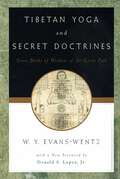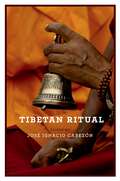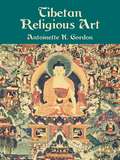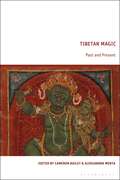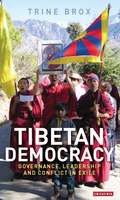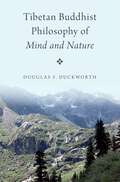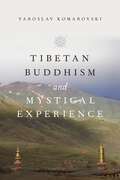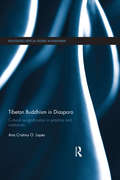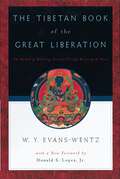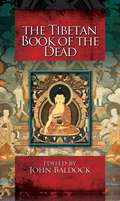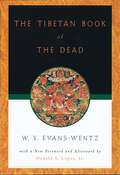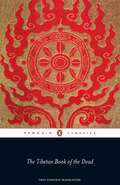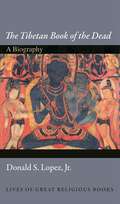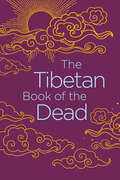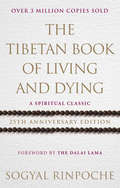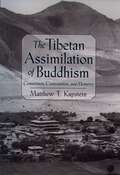- Table View
- List View
Tibetan Yoga and Secret Doctrines: Or Seven Books of Wisdom of the Great Path, According to the Late L=ama Kazi Dawa-Samdup's English Rendering
Books, audiotapes, and classes about yoga are today as familiar as they are widespread, but we in the West have only recently become engaged in the meditative doctrines of the East--only in the last 70 or 80 years, in fact. In the early part of the 20th century, it was the pioneering efforts of keen scholars like W. Y. Evans-Wentz, the late editor of this volume, that triggered our ongoing occidental fascination with such phenomena as yoga, Zen, and meditation. Tibetan Yoga and Secret Doctrines--a companion to the popular Tibetan Book of the Dead, which is also published by Oxford in an authoritative Evans-Wentz edition--is a collection of seven authentic Tibetan yoga texts that first appeared in English in 1935. In these pages, amid useful photographs and reproductions of yoga paintings and manuscripts, readers will encounter some of the principal meditations used by Hindu and Tibetan gurus and philosophers throughout the ages in the attainment of Right Knowledge and Enlightenment. Special commentaries precede each translated text, and a comprehensive introduction contrasts the tenets of Buddhism with European notions of religion, philosophy, and science. Evans-Wentz has also included a body of orally transmitted traditions and teachings that he received firsthand during his fifteen-plus years of study in the Orient, findings that will interest any student of anthropology, psychology, comparative religion, or applied Mah=ay=ana Yoga. These seven distinct but intimately related texts will grant any reader a full and complete view of the spiritual teachings that still inform the life and culture of the East. As with Evans-Wentz's other three Oxford titles on Tibetan religion, which are also appearing in new editions, this third edition of Tibetan Yoga and Secret Doctrines features a new foreword by Donald S. Lopez, author of the recent Prisoners of Shangri-La: Tibetan Buddhism and the West.
Tibetan Ritual
by Jose Ignacio CabezonRitual is one of the most pervasive religious phenomena in the Tibetan cultural world. Despite its ubiquity and importance to Tibetan cultural life, however, only in recent years has Tibetan ritual been given the attention it deserves. This is the first scholarly collection to focus on this important subject. Unique in its historical, geographical and disciplinary breadth, this book brings together eleven essays by an international cast of scholars working on ritual texts, institutions and practices in the greater Tibetan cultural world - Tibet, Nepal, Bhutan, and Mongolia. While most of the chapters focus on Buddhism, two deal with ritual in Tibet's indigenous Bon religion. All of the essays are original to this volume. An extensive introduction by the editor provides a broad overview of Tibetan ritual and contextualizes the chapters within the field of Buddhist and Tibetan studies. The book should find use in advanced undergraduate courses and graduate seminars on Tibetan religion. It will also be of interest to students and scholars of ritual generally.
Tibetan Ritual
by Jose Ignacio CabezonRitual is one of the most pervasive religious phenomena in the Tibetan cultural world. Despite its ubiquity and importance to Tibetan cultural life, however, only in recent years has Tibetan ritual been given the attention it deserves. This is the first scholarly collection to focus on this important subject. Unique in its historical, geographical and disciplinary breadth, this book brings together eleven essays by an international cast of scholars working on ritual texts, institutions and practices in the greater Tibetan cultural world - Tibet, Nepal, Bhutan, and Mongolia. While most of the chapters focus on Buddhism, two deal with ritual in Tibet's indigenous Bon religion. All of the essays are original to this volume. An extensive introduction by the editor provides a broad overview of Tibetan ritual and contextualizes the chapters within the field of Buddhist and Tibetan studies. The book should find use in advanced undergraduate courses and graduate seminars on Tibetan religion. It will also be of interest to students and scholars of ritual generally.
Tibetan Religious Art
by Antoinette K. GordonOver 50 years after its first publication this work remains a vital and useful survey. Assembled by an anthropologist at the American Museum of Natural History, it features artwork from that institution's extensive collections, in addition to seldom-seen Tibetan artifacts from other museums and private collections. Following an informative overview of the intrinsic relationship of Buddist deities to Tibetan art, a lavish assortment of illustrations includes temple paintings, books, wood blocks, ritual objects, robes, masks, metal work, musical instruments, jewelry, butter sculpture, sand mandalas, and calligraphy. Each item is described in detail, with explanations of the methods and materials used in its creation. Preface. Bibliography. Index. 92 black-and-white illustrations.
Tibetan Magic: Past and Present
by Cameron Bailey and Aleksandra WentaThis book focuses on the theme of magic in Tibetan contexts, encompassing both pre-modern and modern text-cultures as well as contemporary practices. It offers a new understanding of the identity and role of magical specialists in both historical and contemporary contexts.Combining the theoretical approaches of anthropology, ethnography, religious and textual studies, the book aims to shed light on experiences, practices and practitioners that have been frequently marginalized by the normative mainstream monastic Buddhisttraditions and Western Buddhist scholarship, which focuses primarily on meditation andphilosophy.The book explores the intersection between magic/folk practices and Tantra, a complex, socio-religious phenomenon associated not only with the religious and political elites who sponsored it, but also with 'marginal' ethnic groups and social milieus, as well as with lay communities at large, who resorted to ritual agents to fulfil their worldly needs.
Tibetan Magic: Past and Present
This book focuses on the theme of magic in Tibetan contexts, encompassing both pre-modern and modern text-cultures as well as contemporary practices. It offers a new understanding of the identity and role of magical specialists in both historical and contemporary contexts.Combining the theoretical approaches of anthropology, ethnography, religious and textual studies, the book aims to shed light on experiences, practices and practitioners that have been frequently marginalized by the normative mainstream monastic Buddhisttraditions and Western Buddhist scholarship, which focuses primarily on meditation andphilosophy.The book explores the intersection between magic/folk practices and Tantra, a complex, socio-religious phenomenon associated not only with the religious and political elites who sponsored it, but also with 'marginal' ethnic groups and social milieus, as well as with lay communities at large, who resorted to ritual agents to fulfil their worldly needs.
Tibetan Democracy: Governance, Leadership and Conflict in Exile (Library of South Asian History and Culture)
by Trine BroxHow do you govern 130,000 people from exile? Tibet – and the struggles of diaspora Tibetans – are elements of an ongoing and highly debated issue. The Dalai Lama's democratisation process during his time in India from 1959–2011, and the subsequent election of Lobsang Sangay as prime minister-in-exile, marked to the Tibetan people the move away from a seemingly feudal societal structure and traditional theocratic governance. Central to these Tibetan democracy aspirations is the 'freedom struggle' in which Tibetans dream of an ideal politics which includes both Tibetans residing in Tibet and those in exile, with the ultimate goal of returning to a self-ruled Tibet. However, some have questioned whether the fight for democracy has helped or hindered a united and free Tibet.
Tibetan Buddhist Philosophy of Mind and Nature
by Douglas S. DuckworthTibetan Buddhist Philosophy of Mind and Nature offers an engaging philosophical overview of Tibetan Buddhist thought. Integrating competing and complementary perspectives on the nature of mind and reality, Douglas Duckworth reveals the way that Buddhist theory informs Buddhist practice in various Tibetan traditions. Duckworth draws upon a contrast between phenomenology and ontology to highlight distinct starting points of inquiries into mind and nature in Buddhism, and to illuminate central issues confronted in Tibetan Buddhist philosophy. This thematic study engages some of the most difficult and critical topics in Buddhist thought, such as the nature of mind and the meaning of emptiness, across a wide range of philosophical traditions, including the "Middle Way" of Madhyamaka, Yogacara (also known as "Mind-Only"), and tantra. Duckworth provides a richly textured overview that explores the intersecting nature of mind, language, and world depicted in Tibetan Buddhist traditions. Further, this book puts Tibetan philosophy into conversation with texts and traditions from India, Europe, and America, exemplifying the possibility and potential for a transformative conversation in global philosophy.
Tibetan Buddhist Philosophy of Mind and Nature
by Douglas S. DuckworthTibetan Buddhist Philosophy of Mind and Nature offers an engaging philosophical overview of Tibetan Buddhist thought. Integrating competing and complementary perspectives on the nature of mind and reality, Douglas Duckworth reveals the way that Buddhist theory informs Buddhist practice in various Tibetan traditions. Duckworth draws upon a contrast between phenomenology and ontology to highlight distinct starting points of inquiries into mind and nature in Buddhism, and to illuminate central issues confronted in Tibetan Buddhist philosophy. This thematic study engages some of the most difficult and critical topics in Buddhist thought, such as the nature of mind and the meaning of emptiness, across a wide range of philosophical traditions, including the "Middle Way" of Madhyamaka, Yogacara (also known as "Mind-Only"), and tantra. Duckworth provides a richly textured overview that explores the intersecting nature of mind, language, and world depicted in Tibetan Buddhist traditions. Further, this book puts Tibetan philosophy into conversation with texts and traditions from India, Europe, and America, exemplifying the possibility and potential for a transformative conversation in global philosophy.
TIBETAN BUDDHISM & MYSTICAL EXPERIENCE C
by Yaroslav KomarovskiIn this book, Yaroslav Komarovski argues that the Tibetan Buddhist interpretations of the realization of ultimate reality both contribute to and challenge contemporary interpretations of unmediated mystical experience. The model used by the majority of Tibetan Buddhist thinkers states that the realization of ultimate reality, while unmediated during its actual occurrence, is necessarily filtered and mediated by the conditioning contemplative processes leading to it, and Komarovski argues that therefore, in order to understand this mystical experience, one must focus on these processes, rather than on the experience itself. Komarovski also provides an in-depth comparison of seminal Tibetan Geluk thinker Tsongkhapa and his major Sakya critic Gorampa's accounts of the realization of ultimate reality, demonstrating that the differences between these two interpretations lie primarily in their conflicting descriptions of the compatible conditioning processes that lead to this realization. Komarovski maintains that Tsongkhapa and Gorampa's views are virtually irreconcilable, but demonstrates that the differing processes outlined by these two thinkers are equally effective in terms of actually attaining the realization of ultimate reality. Tibetan Buddhism and Mystical Experience speaks to the plurality of mystical experience, perhaps even suggesting that the diversity of mystical experience is one of its primary features.
Tibetan Buddhism in Diaspora: Cultural re-signification in practice and institutions (Routledge Critical Studies in Buddhism)
by Ana Cristina LopesThe imperialist ambitions of China – which invaded Tibet in the late 1940s – have sparked the spectacular spread of Tibetan Buddhism worldwide, and especially in western countries. This work is a study on the malleability of a particular Buddhist tradition; on its adaptability in new contexts. The book analyses the nature of the Tibetan Buddhism in the Diaspora. It examines how the re-signification of Tibetan Buddhist practices and organizational structures in the present refers back to the dismantlement of the Tibetan state headed by the Dalai Lama and the fragmentation of Tibetan Buddhist religious organizations in general. It includes extensive multi-sited fieldwork conducted in the United States, Brazil, Europe, and Asia and a detailed analysis of contemporary documents relating to the global spread of Tibetan Buddhism. The author demonstrates that there is a "de-institutionalized" and "de-territorialized" project of political power and religious organization, which, among several other consequences, engenders the gradual "autonomization" of lamas and lineages inside the religious field of Tibetan Buddhism. Thus, a spectre of these previous institutions continues to exist outside their original contexts, and they are continually activated in ever-new settings. Using a combination of two different academic traditions – namely, the Brazilian anthropological tradition and the American Buddhist studies tradition – it investigates the "process of cultural re-signification" of Tibetan Buddhism in the context of its Diaspora. Thus, it will be a valuable resource to students and scholars of Asian Religion, Asian Studies and Buddhism.
Tibetan Buddhism in Diaspora: Cultural re-signification in practice and institutions (Routledge Critical Studies in Buddhism)
by Ana Cristina LopesThe imperialist ambitions of China – which invaded Tibet in the late 1940s – have sparked the spectacular spread of Tibetan Buddhism worldwide, and especially in western countries. This work is a study on the malleability of a particular Buddhist tradition; on its adaptability in new contexts. The book analyses the nature of the Tibetan Buddhism in the Diaspora. It examines how the re-signification of Tibetan Buddhist practices and organizational structures in the present refers back to the dismantlement of the Tibetan state headed by the Dalai Lama and the fragmentation of Tibetan Buddhist religious organizations in general. It includes extensive multi-sited fieldwork conducted in the United States, Brazil, Europe, and Asia and a detailed analysis of contemporary documents relating to the global spread of Tibetan Buddhism. The author demonstrates that there is a "de-institutionalized" and "de-territorialized" project of political power and religious organization, which, among several other consequences, engenders the gradual "autonomization" of lamas and lineages inside the religious field of Tibetan Buddhism. Thus, a spectre of these previous institutions continues to exist outside their original contexts, and they are continually activated in ever-new settings. Using a combination of two different academic traditions – namely, the Brazilian anthropological tradition and the American Buddhist studies tradition – it investigates the "process of cultural re-signification" of Tibetan Buddhism in the context of its Diaspora. Thus, it will be a valuable resource to students and scholars of Asian Religion, Asian Studies and Buddhism.
Tibetan Buddhism and Mystical Experience
by Yaroslav KomarovskiIn this book, Yaroslav Komarovski argues that the Tibetan Buddhist interpretations of the realization of ultimate reality both contribute to and challenge contemporary interpretations of unmediated mystical experience. The model used by the majority of Tibetan Buddhist thinkers states that the realization of ultimate reality, while unmediated during its actual occurrence, is necessarily filtered and mediated by the conditioning contemplative processes leading to it, and Komarovski argues that therefore, in order to understand this mystical experience, one must focus on these processes, rather than on the experience itself. Komarovski also provides an in-depth comparison of seminal Tibetan Geluk thinker Tsongkhapa and his major Sakya critic Gorampa's accounts of the realization of ultimate reality, demonstrating that the differences between these two interpretations lie primarily in their conflicting descriptions of the compatible conditioning processes that lead to this realization. Komarovski maintains that Tsongkhapa and Gorampa's views are virtually irreconcilable, but demonstrates that the differing processes outlined by these two thinkers are equally effective in terms of actually attaining the realization of ultimate reality. Tibetan Buddhism and Mystical Experience speaks to the plurality of mystical experience, perhaps even suggesting that the diversity of mystical experience is one of its primary features.
The Tibetan Book of the Great Liberation: Or the Method of Realizing Nirv=ana through Knowing the Mind
by W. Y. Evans-WentzThe Tibetan Book of the Great Liberation, which was unknown to the Western world until its first publication in 1954, speaks to the quintessence of the Supreme Path, or Mah=ay=ana, and fully reveals the yogic method of attaining Enlightenment. Such attainment can happen, as shown here, by means of knowing the One Mind, the cosmic All-Consciousness, without recourse to the postures, breathings, and other techniques associated with the lower yogas. The original text for this volume belongs to the Bardo Thödol series of treatises concerning various ways of achieving transcendence, a series that figures into the Tantric school of the Mah=ay=ana. Authorship of this particular volume is attributed to the legendary Padma-Sambhava, who journeyed from India to Tibet in the 8th century, as the story goes, at the invitation of a Tibetan king. Padma-Sambhava's text per se is preceded by an account of the great guru's own life and secret doctrines. It is followed by the testamentary teachings of the Guru Phadampa Sangay, which are meant to augment the thought of the other gurus discussed herein. Still more useful supplementary material will be found in the book's introductory remarks, by its editor Evans-Wentz and by the eminent psychoanalyst C. G. Jung. The former presents a 100-page General Introduction that explains several key names and notions (such as Nirv=ana, for starters) with the lucidity, ease, and sagacity that are this scholar's hallmark; the latter offers a Psychological Commentary that weighs the differences between Eastern and Western modes of thought before equating the "collective unconscious" with the Enlightened Mind of the Buddhist. As with the other three volumes in the late Evans-Wentz's critically acclaimed Tibetan series, all four of which are being published by Oxford in new editions, this book also features a new Foreword by Donald S. Lopez.
The Tibetan Book of the Great Liberation: Or the Method of Realizing Nirv=ana through Knowing the Mind
The Tibetan Book of the Great Liberation, which was unknown to the Western world until its first publication in 1954, speaks to the quintessence of the Supreme Path, or Mah=ay=ana, and fully reveals the yogic method of attaining Enlightenment. Such attainment can happen, as shown here, by means of knowing the One Mind, the cosmic All-Consciousness, without recourse to the postures, breathings, and other techniques associated with the lower yogas. The original text for this volume belongs to the Bardo Thödol series of treatises concerning various ways of achieving transcendence, a series that figures into the Tantric school of the Mah=ay=ana. Authorship of this particular volume is attributed to the legendary Padma-Sambhava, who journeyed from India to Tibet in the 8th century, as the story goes, at the invitation of a Tibetan king. Padma-Sambhava's text per se is preceded by an account of the great guru's own life and secret doctrines. It is followed by the testamentary teachings of the Guru Phadampa Sangay, which are meant to augment the thought of the other gurus discussed herein. Still more useful supplementary material will be found in the book's introductory remarks, by its editor Evans-Wentz and by the eminent psychoanalyst C. G. Jung. The former presents a 100-page General Introduction that explains several key names and notions (such as Nirv=ana, for starters) with the lucidity, ease, and sagacity that are this scholar's hallmark; the latter offers a Psychological Commentary that weighs the differences between Eastern and Western modes of thought before equating the "collective unconscious" with the Enlightened Mind of the Buddhist. As with the other three volumes in the late Evans-Wentz's critically acclaimed Tibetan series, all four of which are being published by Oxford in new editions, this book also features a new Foreword by Donald S. Lopez.
The Tibetan Book of the Dead
by John BaldockSaid to have its origins in the 'treasure texts' that were supposedly hidden away by Padmasambhava, the Lotus Guru, in Tibet in the 8th century, The Tibetan Book of the Dead was traditionally read aloud to the dying or recently deceased as a guide to the afterlife.It explains how to recognize the true nature of the mind so that after death it will be possible to attain enlightenment and liberation from the suffering associated with the endless cycle of death and rebirth.For many, reading The Tibetan Book of the Dead has been a revelatory experience on the path to finding a sense of spirituality and self-knowledge.
The Tibetan Book of the Dead: Or The After-Death Experiences on the Bardo Plane, according to L=ama Kazi Dawa-Samdup's English Rendering
by W. Y. Evans-Wentz Donald S. LopezThe Tibetan Book of the Dead is one of the texts that, according to legend, Padma-Sambhava was compelled to hide during his visit to Tibet in the late 8th century. The guru hid his books in stones, lakes, and pillars because the Tibetans of that day and age were somehow unprepared for their teachings. Now, in the form of the ever-popular Tibetan Book of the Dead, these teachings are constantly being discovered and rediscovered by Western readers of many different backgrounds--a phenomenon which began in 1927 with Oxford's first edition of Dr. Evans-Wentz's landmark volume. While it is traditionally used as a mortuary text, to be read or recited in the presence of a dead or dying person, this book--which relates the whole experience of death and rebirth in three intermediate states of being--was originally understood as a guide not only for the dead but also for the living. As a contribution to the science of death and dying--not to mention the belief in life after death, or the belief in rebirth--The Tibetan Book of the Dead is unique among the sacred texts of the world, for its socio-cultural influence in this regard is without comparison. This fourth edition features a new foreword, afterword, and suggested further reading list by Donald S. Lopez, author of Prisoners of Shangri-La: Tibetan Buddhism and the West. Lopez traces the whole history of the late Evans-Wentz's three earlier editions of this book, fully considering the work of contributors to previous editions (C. G. Jung among them), the sections that were added by Evans-Wentz along the way, the questions surrounding the book's translation, and finally the volume's profound importance in engendering both popular and academic interest in the religion and culture of Tibet. Another key theme that Lopez addresses is the changing nature of this book's audience--from the prewar theosophists to the beat poets to the hippies to contemporary exponents of the hospice movement--and what these audiences have found (or sought) in its very old pages.
The Tibetan Book of the Dead: First Complete Translation (Penguin Classics Deluxe Edition)
by Thupten Jinpa Gyurme Dorje Graham ColemanThe most graceful English translation of this masterpiece of world literature - prepared with the participation of the Dalai Lama and eminent contemporary masters of this traditin appointed by the Dalai LamaOne of the greatest works created by any culture and one of the most influential of all Tibetan Buddhist texts in the West, The Tibetan Book of the Dead has had a number of distinguished translations, but strangely all of these have been partial abridgements. Now the entire text has not only been made available in English but in a translation of quite remarkable clarity and beauty. A comprehensive guide to living and dying, The Tibetan Book of the Dead contains exquisitely written guidance and practices related to transforming our experience in daily life, on the processes of dying and the after-death state, and on how to help those who are dying. As originally intended this is as much a work for the living, as it is for those who wish to think beyond a mere conventional lifetime to a vastly greater and grander cycle.'Extraordinary ... this work will be a source of inspiration and support to many' His Holiness the Dalai Lama
The Tibetan Book of the Dead: A Biography (Lives of Great Religious Books #5)
by Donald S. LopezThe Tibetan Book of the Dead is the most famous Buddhist text in the West, having sold more than a million copies since it was first published in English in 1927. Carl Jung wrote a commentary on it, Timothy Leary redesigned it as a guidebook for an acid trip, and the Beatles quoted Leary's version in their song "Tomorrow Never Knows." More recently, the book has been adopted by the hospice movement, enshrined by Penguin Classics, and made into an audiobook read by Richard Gere. Yet, as acclaimed writer and scholar of Buddhism Donald Lopez writes, "The Tibetan Book of the Dead is not really Tibetan, it is not really a book, and it is not really about death." In this compelling introduction and short history, Lopez tells the strange story of how a relatively obscure and malleable collection of Buddhist texts of uncertain origin came to be so revered--and so misunderstood--in the West. The central character in this story is Walter Evans-Wentz (1878-1965), an eccentric scholar and spiritual seeker from Trenton, New Jersey, who, despite not knowing the Tibetan language and never visiting the country, crafted and named The Tibetan Book of the Dead. In fact, Lopez argues, Evans-Wentz's book is much more American than Tibetan, owing a greater debt to Theosophy and Madame Blavatsky than to the lamas of the Land of Snows. Indeed, Lopez suggests that the book's perennial appeal stems not only from its origins in magical and mysterious Tibet, but also from the way Evans-Wentz translated the text into the language of a very American spirituality.
"The Tibetan Book of the Dead": A Biography
by Donald S. Lopez Jr.The Tibetan Book of the Dead is the most famous Buddhist text in the West, having sold more than a million copies since it was first published in English in 1927. Carl Jung wrote a commentary on it, Timothy Leary redesigned it as a guidebook for an acid trip, and the Beatles quoted Leary's version in their song "Tomorrow Never Knows." More recently, the book has been adopted by the hospice movement, enshrined by Penguin Classics, and made into an audiobook read by Richard Gere. Yet, as acclaimed writer and scholar of Buddhism Donald Lopez writes, "The Tibetan Book of the Dead is not really Tibetan, it is not really a book, and it is not really about death." In this compelling introduction and short history, Lopez tells the strange story of how a relatively obscure and malleable collection of Buddhist texts of uncertain origin came to be so revered--and so misunderstood--in the West. The central character in this story is Walter Evans-Wentz (1878-1965), an eccentric scholar and spiritual seeker from Trenton, New Jersey, who, despite not knowing the Tibetan language and never visiting the country, crafted and named The Tibetan Book of the Dead. In fact, Lopez argues, Evans-Wentz's book is much more American than Tibetan, owing a greater debt to Theosophy and Madame Blavatsky than to the lamas of the Land of Snows. Indeed, Lopez suggests that the book's perennial appeal stems not only from its origins in magical and mysterious Tibet, but also from the way Evans-Wentz translated the text into the language of a very American spirituality.
"The Tibetan Book of the Dead": A Biography (PDF)
by Donald S. Lopez Jr.The Tibetan Book of the Dead is the most famous Buddhist text in the West, having sold more than a million copies since it was first published in English in 1927. Carl Jung wrote a commentary on it, Timothy Leary redesigned it as a guidebook for an acid trip, and the Beatles quoted Leary's version in their song "Tomorrow Never Knows." More recently, the book has been adopted by the hospice movement, enshrined by Penguin Classics, and made into an audiobook read by Richard Gere. Yet, as acclaimed writer and scholar of Buddhism Donald Lopez writes, "The Tibetan Book of the Dead is not really Tibetan, it is not really a book, and it is not really about death." In this compelling introduction and short history, Lopez tells the strange story of how a relatively obscure and malleable collection of Buddhist texts of uncertain origin came to be so revered--and so misunderstood--in the West. The central character in this story is Walter Evans-Wentz (1878-1965), an eccentric scholar and spiritual seeker from Trenton, New Jersey, who, despite not knowing the Tibetan language and never visiting the country, crafted and named The Tibetan Book of the Dead. In fact, Lopez argues, Evans-Wentz's book is much more American than Tibetan, owing a greater debt to Theosophy and Madame Blavatsky than to the lamas of the Land of Snows. Indeed, Lopez suggests that the book's perennial appeal stems not only from its origins in magical and mysterious Tibet, but also from the way Evans-Wentz translated the text into the language of a very American spirituality.
The Tibetan Book of the Dead (Arcturus Classics)
by Padmasambhava John BaldockSaid to have its origins in the 'treasure texts' that were supposedly hidden away by Padmasambhava, the Lotus Guru, in Tibet in the 8th century, The Tibetan Book of the Dead was traditionally read aloud to the dying or recently deceased as a guide to the afterlife.It explains how to recognize the true nature of the mind so that after death it will be possible to attain enlightenment and liberation from the suffering associated with the endless cycle of death and rebirth.For many, reading The Tibetan Book of the Dead has been a revelatory experience on the path to finding a sense of spirituality and self-knowledge.
The Tibetan Book of the Dead: Or The After-Death Experiences on the Bardo Plane, according to L=ama Kazi Dawa-Samdup's English Rendering
by W. Y. Evans-WentzThe Tibetan Book of the Dead is one of the texts that, according to legend, Padma-Sambhava was compelled to hide during his visit to Tibet in the late 8th century. The guru hid his books in stones, lakes, and pillars because the Tibetans of that day and age were somehow unprepared for their teachings. Now, in the form of the ever-popular Tibetan Book of the Dead, these teachings are constantly being discovered and rediscovered by Western readers of many different backgrounds--a phenomenon which began in 1927 with Oxford's first edition of Dr. Evans-Wentz's landmark volume. While it is traditionally used as a mortuary text, to be read or recited in the presence of a dead or dying person, this book--which relates the whole experience of death and rebirth in three intermediate states of being--was originally understood as a guide not only for the dead but also for the living. As a contribution to the science of death and dying--not to mention the belief in life after death, or the belief in rebirth--The Tibetan Book of the Dead is unique among the sacred texts of the world, for its socio-cultural influence in this regard is without comparison. This fourth edition features a new foreword, afterword, and suggested further reading list by Donald S. Lopez, author of Prisoners of Shangri-La: Tibetan Buddhism and the West. Lopez traces the whole history of the late Evans-Wentz's three earlier editions of this book, fully considering the work of contributors to previous editions (C. G. Jung among them), the sections that were added by Evans-Wentz along the way, the questions surrounding the book's translation, and finally the volume's profound importance in engendering both popular and academic interest in the religion and culture of Tibet. Another key theme that Lopez addresses is the changing nature of this book's audience--from the prewar theosophists to the beat poets to the hippies to contemporary exponents of the hospice movement--and what these audiences have found (or sought) in its very old pages.
The Tibetan Book Of Living And Dying: A Spiritual Classic from One of the Foremost Interpreters of Tibetan Buddhism to the West
by Sogyal Rinpoche25th Anniversary EditionOver 3 Million Copies Sold'I couldn't give this book a higher recommendation' BILLY CONNOLLYWritten by the Buddhist meditation master and popular international speaker Sogyal Rinpoche, this highly acclaimed book clarifies the majestic vision of life and death that underlies the Tibetan Buddhist tradition. It includes not only a lucid, inspiring and complete introduction to the practice of meditation, but also advice on how to care for the dying with love and compassion, and how to bring them help of a spiritual kind. But there is much more besides in this classic work, which was written to inspire all who read it to begin the journey to enlightenment and so become 'servants of peace'.
The Tibetan Assimilation of Buddhism: Conversion, Contestation, and Memory
by Matthew T. KapsteinThis book explores the Buddhist role in the formation of Tibetan religious thought and identity. In three major sections, the author examines Tibet's eighth-century conversion, sources of dispute within the Tibetan Buddhist tradition, and the continuing revelation of the teaching in both doctrine and myth.
